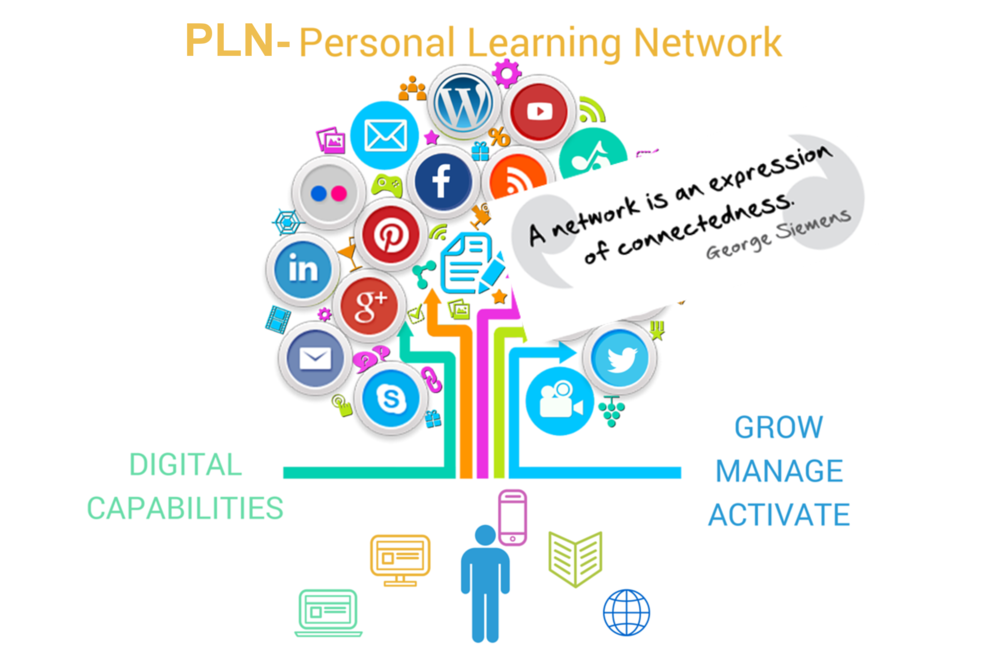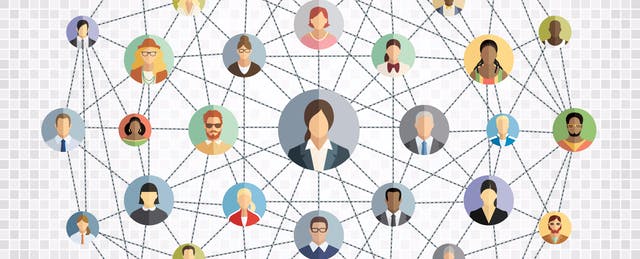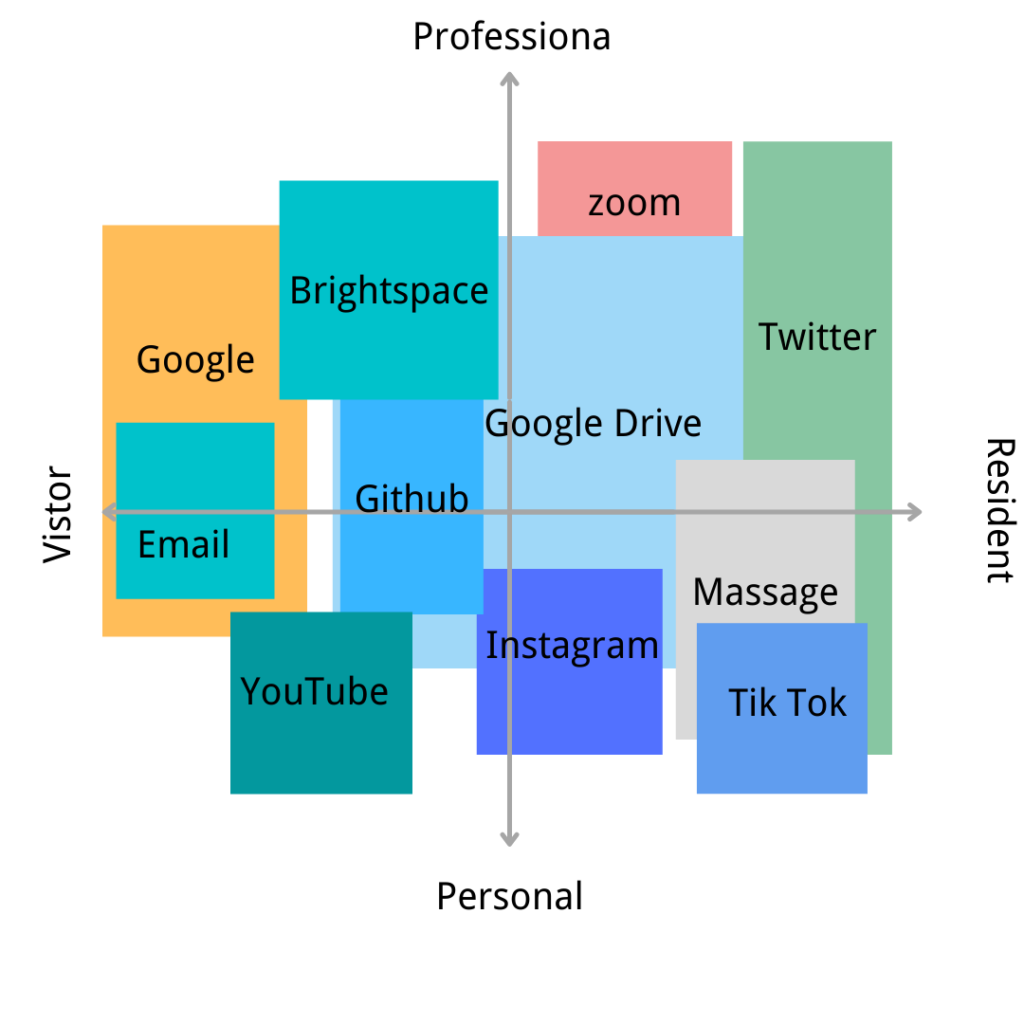Below are my results and reflections on this course.
Examine the application of social media to support learning
In week 2, I understand and learn what PLN (Personal Learning Network) is. By reading the article: “What is Personal Learning Network“. The author explains PLN in the article: PLN is a place where you may gather, collect, interact, create, and share information and expertise with a group of people from all over the world, at any time. Jiaxin proposes in her wow and wonder: PLN allows people to study at their preferred time and locations. I think the emergence of PLN not only helps me better explore other people’s learning experiences through social media but also brings distance learning opportunities to students who cannot access educational resources in remote areas. So the emergence of PLN not only allows me to share and exchange my learning experience in the global community but also to get the latest information from domain experts. It also got me thinking about how to use PLN as a link for my studies. For example, I use Twitter as my PLN platform for learning which gives me a good platform for an interchange of learning experiences. I followed for example the official Twitter account of UVIC to learn about the school and some learning experiences.

Explain personalized learning and its relation to learning theory
Personalized learning, in my opinion, is the selection of different educational settings and programs based on different needs and abilities. I remembered that in week 3, I learned what connectionism is. By reading the article: “Connectivism: A Learning Theory for the Digital Age”. The author mentions comparisons with traditional learning theories (Behaviorism, cognitivism, and constructivism). The emergence of connectionism is based on the arrival of digital spaces and the development of technology. Connectionism articulates a learning paradigm that responds to changes in society’s current structure, according to Tian’s blog. When new technologies are adopted instead of traditional learning techniques, the way people learn and their goals change. Thus, connectionism is a theory of learning in the digital age, where learning is distributed across social networks. It also got me thinking about how to use PLN as a link to my learning. Knowledge and information are connected through links between different nodes.
Recognize that the Internet is not a neutral or equal space for everyone
What made me realize that the internet is not a neutral or equal space for everyone is through reading the article “Visitors and Residents” in Week 4, which mentions: Older people will never get as high a level as younger people’s technical capabilities. Prensky divides the elderly as digital immigrants and the young as digital natives. He argues that our students today are “native speakers” of the digital languages of computers, video games, and the Internet. Nick said in his blog: Adults will never be able to learn a new language as well as children since they will not be immersed in the language as they grow up, and the same is true for technological learning. And for people who were not born in the digital age, the Internet is very unequal. This reminds me that in China, because of the epidemic, many people cannot go out and can only buy food through their mobile phones, but the elderly who are not good at using the Internet are left behind.
Likewise, it has been argued that the capabilities of social media platforms generally do not translate into other online spaces or tools (Stoerger, 2009), although this is difficult to quantify. Therefore, the differentiation of different social networking platforms also made me think about how to use PLN on some specific media platforms to differentiate it from life. For example, Twitter conducts PLN, and Instagram publishes some life content.
Apply social media to develop a personal learning network in support of your personal and/or professional development
I used a lot of social media throughout the semester to develop a personal learning network. At the beginning of the class, the professor introduced us to two programs, Github and WordPress. We made good use of Github for sharing classroom educational resources and created an ebook about Zenly with my team.

WordPress is a great PLN platform. It can take what we want to share in a new way by blogging. We can comment on articles of interest as node connections for the PLN. Learning about these two social media apps is something I think is great and rewarding.
Identify privacy issues and practice online behaviors that are legal, safe, consensual, and ethical
The openness of online content makes it easier for people’s privacy to be leaked and spread. This is because of the insecurity and immaturity of network technology. According to Tian’s blog, the frequent incidence of personal privacy breaches in recent years has resulted in a crisis of faith in big data, because thorough data analysis can provide more valuable data, making it simpler to become a target of network assaults. My blog for Week 6 also mentioned that rumors and misinformation will flourish, fueled by social media. It got me thinking that when I sign up for a social media app, they ask for my location, address book, etc, which also increases my risk of leaks.
Recognize data ownership and licensing (Creative Commons, Copyright, Fair Dealing, and Public Domain) as a core practice when creating, sharing, or using resources online
An important characteristic of personal data is its originality. I think the attribution of data is an important area. It reminds me of music ownership. A long time ago, pirated music was everywhere, and this is a problem that has always plagued us. In the back, record companies cooperate with music software to download songs for a fee. It has greatly reduced the occurrence of pirated records and solved the problem of copyright. Mia also mentioned this in her showcase: One-way users can avoid copyright infringement is to make sure the music in the video comes from the TikTok app. This is because TikTok has licensing agreements with various artists (Gardoce, 2021).
Practice digital, networked, and open literacies in support of learning about social media and personalized learning
In this study, I have learned and applied many social media software for PLN. They are all completely open. I also enjoy reading and wishing others could write some comments on my stuff. Because it helps me think and progress. As a new educational method, the Internet is also an important component of schools. The diversity of information on the web also affects my thinking. In the ninth week of reading, adult learning theory is mentioned. Adult learning theory is based on the idea that adults and children learn differently, and that these differences should be acknowledged and accommodated. And I should also use the four principles of adult pedagogy to improve and develop my future learning.




Recent Comments